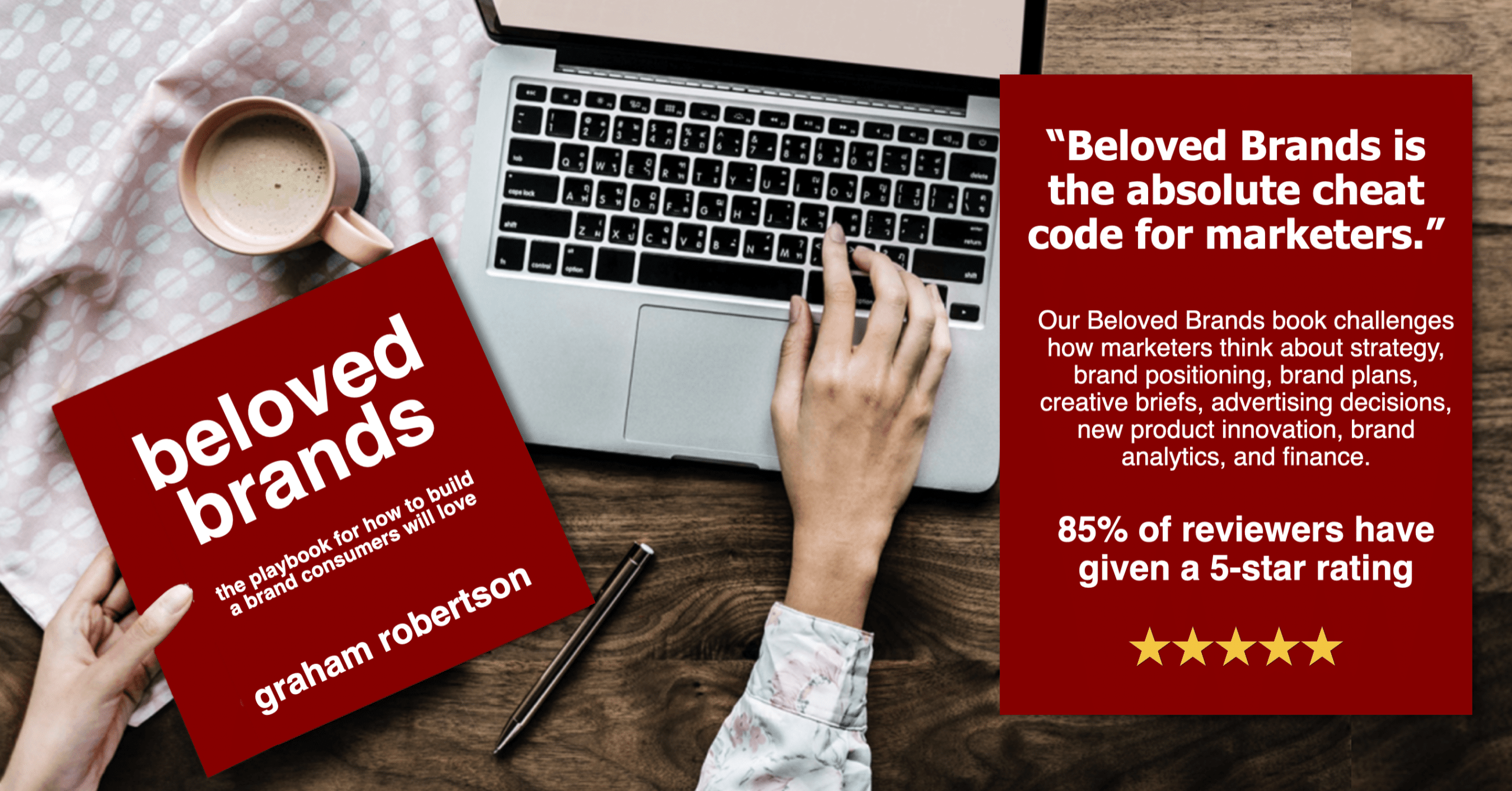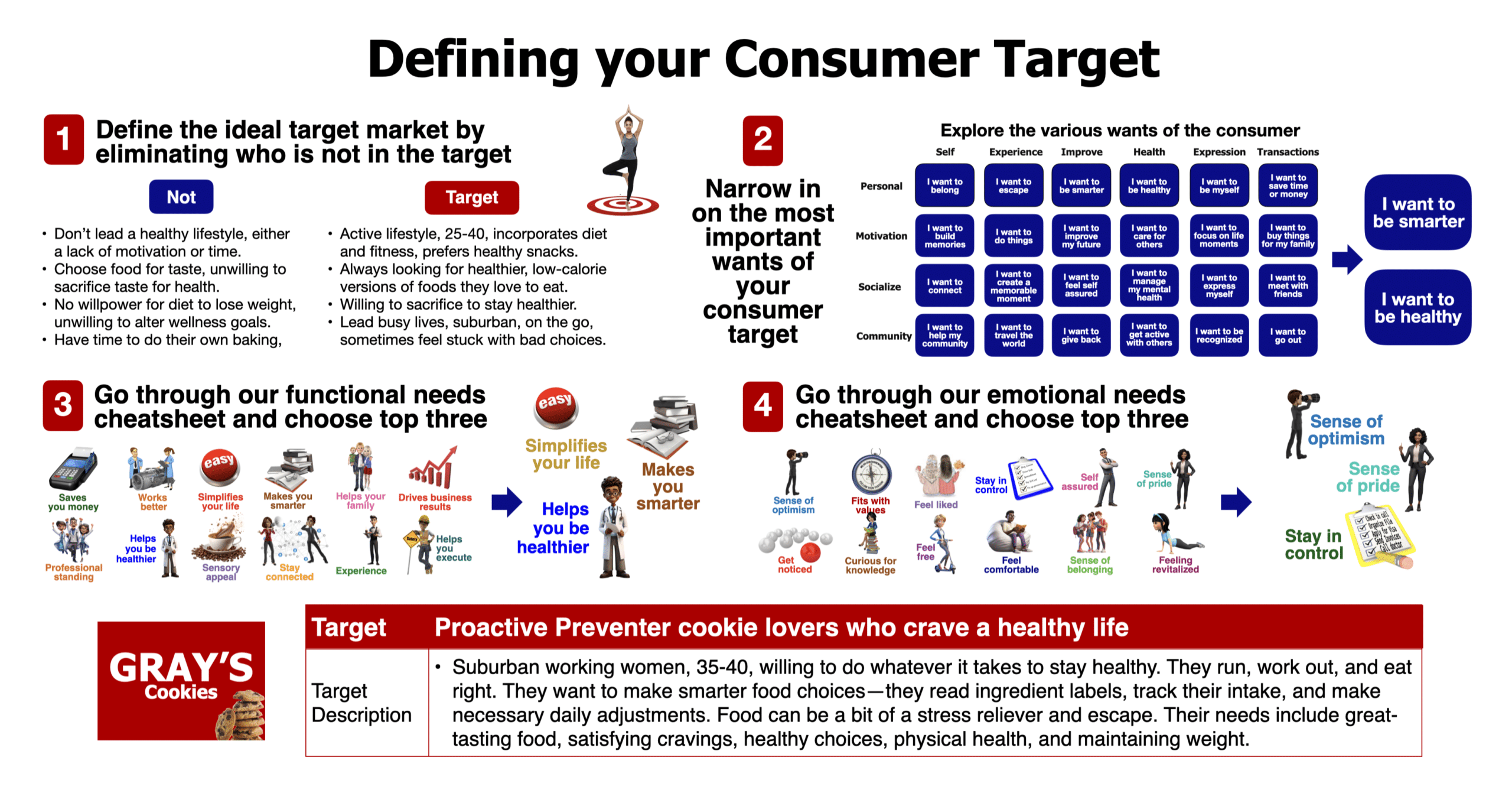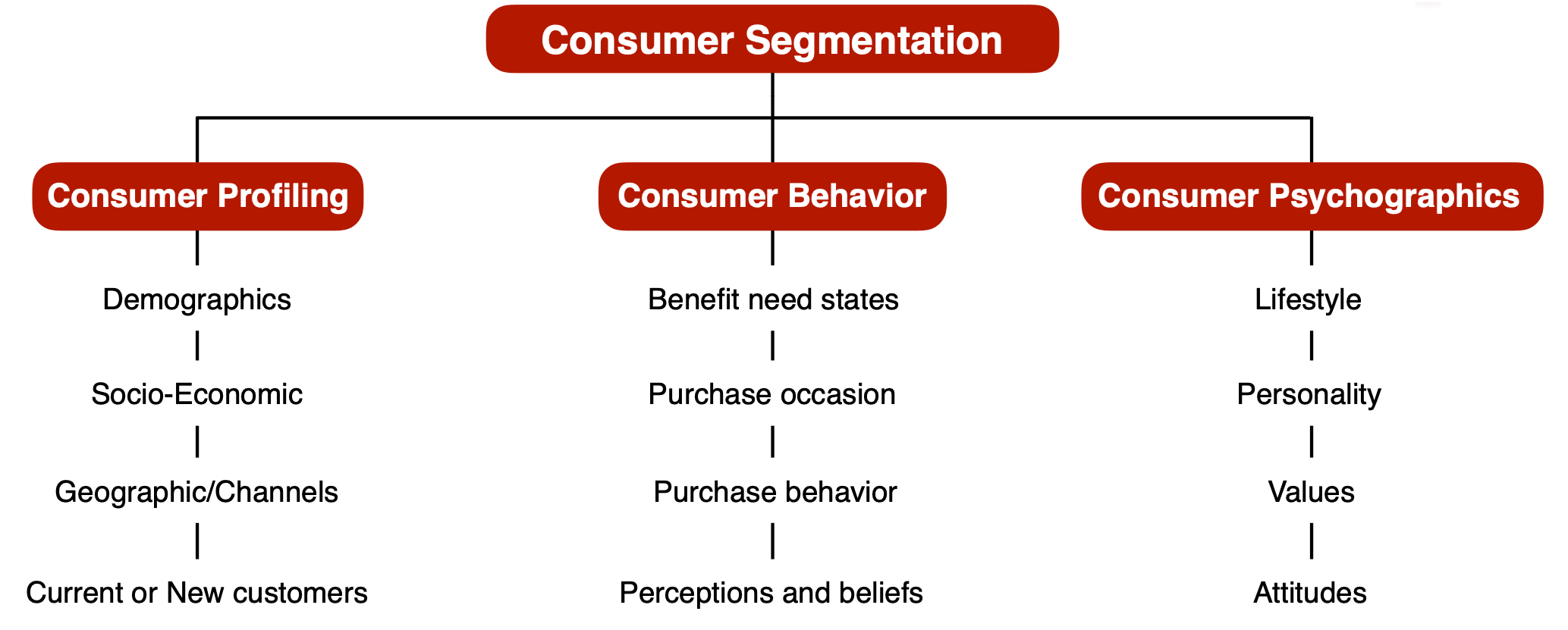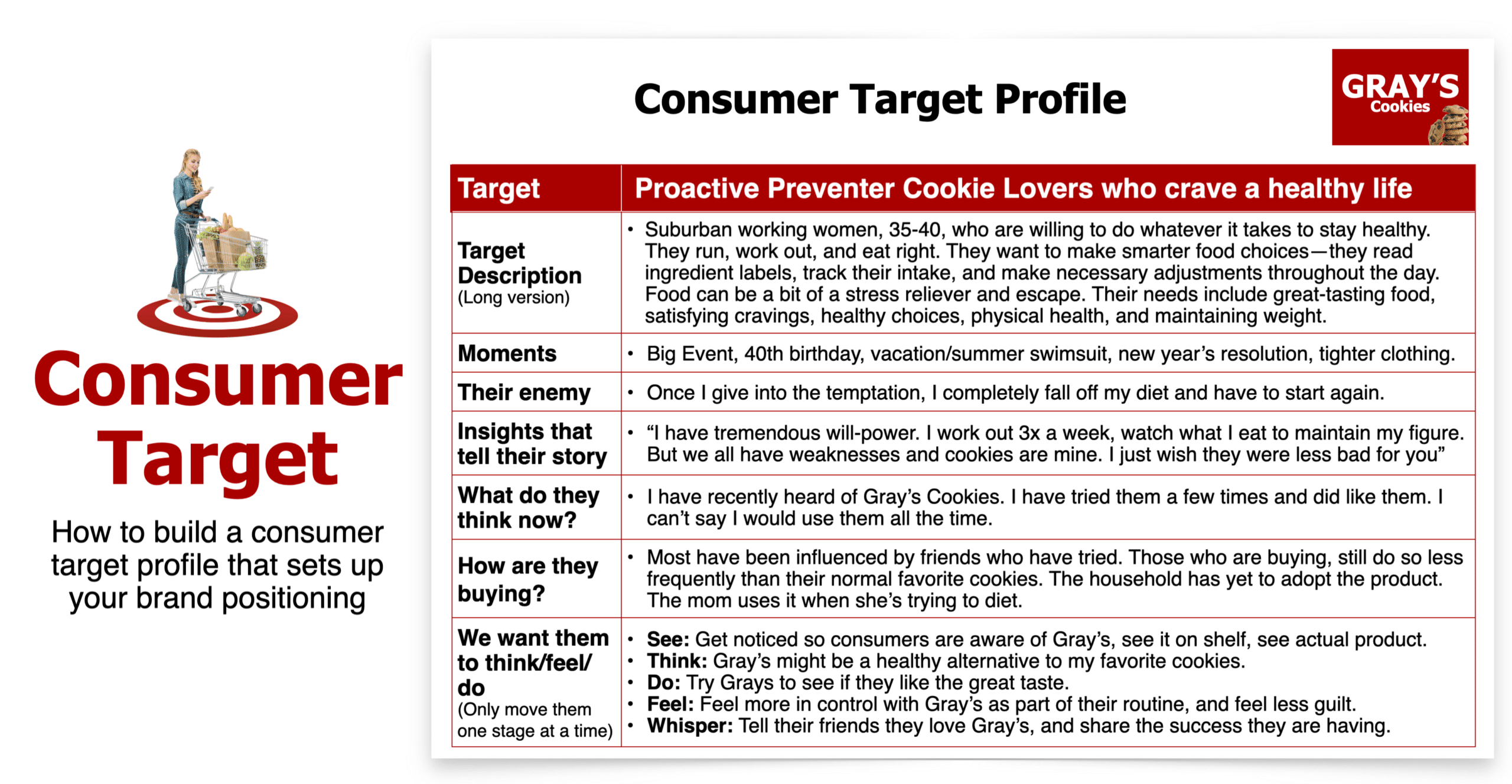One of the biggest mistakes I see marketers make is picking too broad of a consumer target market. A tight consumer profile helps you decide who is in the target and who is not in the target.
There is a myth that a bigger target will make the brand bigger, so the scared marketer targets “everyone.” There seems to be an irrational fear of leaving someone out. Spreading your brand’s limited resources across an entire population is completely cost-prohibitive. While targeting everyone “just in case” might feel safe at first, it is riskier because you spread your resources so broadly you never see the full impact you want to see. This fear of missing out (FOMO) gives your brand a lower return on investment and eventually will drain your brand’s limited resources. Please focus.
The shoeshine target market
Every time I go to the airport, I see the shoeshine person looking down at people’s feet, qualifying potential customers based on whether they are wearing leather shoes. It reminds me of how simple it is to target those consumers who are the most motivated by what you do. Sure, they could be missing out on the very few people who have leather shoes in their suitcase. However, using a focused approach to profile consumers is a smart way to maximize your return on effort.
If shoeshiners can narrow the focus of their consumer profile to people wearing leather shoes, why is it so difficult for you to narrow down your target to those who care the most about what your brand does?
Focus on those consumers who are most motivated by what you offer
Instead of going after who you want, go after those who want you
If you have a golf ball that goes longer than any other golf ball, go after those golfers who already hit it long and want to hit it even longer. If you have a new recipe for chicken noodle soup, go after those who love chicken noodle soup. And if you are selling a mortgage, go after those consumers who want to buy a house. Damn, that sounds simple. Then why do I see golf marketers go after people who hate golf, soup marketers go after those who don’t give a damn about soup and banks trying to sell mortgages to everyone.
To illustrate this point of focus, I look at three types of potential consumer target markets:
Selling target:
This is pretty much everyone, as you sell to anyone who comes in the door and wants to buy, regardless if they fit your ideal target. However, “everyone” should never be a marketing target. You are spreading your resources so thin your message will miss out on really capturing those consumers most likely to respond, which provides an efficient payback.
Marketing target:
You should focus your limited resources on those consumers who have the highest likelihood of responding positively to your brand positioning, advertising, and new product innovation. A tighter consumer target market provides the fastest and highest return on investment.
Program target:
When working on a specific campaign, narrow the target even further. Focus on people you want to stimulate to see if you can get them to see, think, feel or do things that will benefit your brand. A specific program consumer profile is smart when launching a new product, or aligning with a promotional time of year (including back-to-school or Christmas).
To illustrate, click on the consumer target market options to zoom in
The case of the crazy bank that targeted everyone
I worked with a bank that told me its consumer target market for a first-time mortgage (home loan) was adults aged 18-65, new customers, current customers, and employees. Sarcastically, I said, “You have forgotten about tourists and prisoners.” As I pressed to help them narrow their consumer profile, they pushed back saying they did not want to alienate anyone just in case. I cringed at the word “alienate” and the idea of “just in case.”
Sure, the odd 64-year-old might be tired of renting for the past 40 years, but they would not be offended having a 32-year-old in the ad. You have to realize that people know when they are a natural outlier, and they aren’t offended when they are. The age target that would be most motivated by a first-time mortgage ad would be someone who is in their late twenties or early thirties.
No one ever bought a mortgage without buying a house
I improved the target definition, even more, by adding, “They are looking to buy a house.” This thinking is equal to the shoeshine person looking for someone wearing leather shoes. No one buys their first house on impulse, and no one ever wanted a mortgage without buying a house. Consumers usually spend 6-12 months looking for a house. It sounds obvious, but why was it lost on the bank?
Think about the difference the focused consumer profile makes on the marketing programs. Instead of randomly advertising to everyone on mass media, your brand should focus your limited resources on the consumer who is most open to your message and where they are most willing to listen. Advertise on real estate websites during their lunch hour when they take a break to search the web for new housing options. Use billboards outside new housing developments and use radio ads on Saturday afternoons to capture them while they drive around looking at new homes.
Beloved Brands playbook
Our Beloved Brands playbook goes in depth on everything you need to build a brand consumers will love. Learn about strategic thinking, brand positioning, writing brand plans, advertising decisions, media planning, marketing analytics, and financials.

Our readers tell us they keep our Beloved Brands playbook close by for whenever they need to take on a new project. Clearly, we are thrilled that 89% of Amazon reviewers have given Beloved Brands a 5-star rating. Also, we wrote a B2B Brands playbook and a Healthcare Brands playbook.
Defining the consumer target
It’s not just about deciding who they are, but who is not in your target. Help your target come to life by adding their moments of accelerated needs, consumer enemy and consumer insights.
A successful brand starts with a clear understanding of who your ideal consumer is—and who they aren’t. Here’s a step-by-step approach to narrowing in on your target, as shown in the example for Gray’s Cookies:
1️⃣ Eliminate Who’s Not Your Target:
- By defining who’s outside your target (those who prioritize taste over health or lack motivation), you can sharpen your focus on the right audience.
2️⃣ Identify Key Consumer Wants:
- Understanding the most important wants of your consumer allows you to tailor your brand message effectively. For Gray’s Cookies, it’s about appealing to those who want to feel healthier and smarter in their choices.
3️⃣ Prioritize Functional Needs:
- Choosing the top functional needs—like helping consumers be healthier or smarter—ensures that your brand provides tangible benefits aligned with consumer desires.
4️⃣ Address Emotional Needs:
- Emotional benefits create a deeper connection. For health-conscious consumers, feelings like optimism, pride, and control can turn a product into something more meaningful.

To illustrate, click on the consumer target market example to zoom in
🔍 Target Summary:
For Gray’s Cookies, the ideal consumer is the proactive, health-conscious individual who craves a guilt-free indulgence.
Remember, a well-defined consumer target is more than demographics—it’s about understanding motivations, needs, and aspirations. The better you know your audience, the more resonant and effective your brand messaging will be. 💡
Who is most likely to try your brand or love your brand in the future?
There are various ways to divide up the market to identify the most motivated possible audience. Here are three main ways to segment the market:
To illustrate, click on the consumer segmentation process to define your consumer target.
Consumer profiling:
First, using demographics is one of the easiest ways to segment. While some resist demographics, you will eventually have to put someone in the ad and likely buy media using age. Then, add in socioeconomic and geographic elements, and how they shop. Next, choose to focus on either current customers or new customers, but never both at the same time. Trying to drive penetration and usage at the same time will drain your resources. These are two dramatically different targets needing two different messages, two types of media, and potentially two different types of product offerings.
Consumer behavior:
Divide the market based on consumer need states, purchase occasions, life stages, or life moments. You can also divide the market based on purchase behavior, perceptions, or beliefs.
Consumer psychographics:
Psychographics look at commonly shared behaviors, such as the consumer’s shared lifestyle, personality, values or attitudes.
Segmentation forces you to focus.
Please do not spend tons of money on a segmentation study and then try to figure out how to go after each segment with a completely different brand message. I have seen marketers do this, and it is borderline crazy. That is not the right way to use these studies. A brand can only ever have one reputation. While this shows 12 different ways you can segment, a good starting point is to use a combination of 3 or 4 segmentation elements to narrow down your target. The choice depends on the category.
Consumer needs
If you can make consumers buy, you will never have to sell. The best brands do not go after consumers; they get consumers to crave their brand and come after them. The process I will take you through involves matching up what your consumers want and need with what your brand does best.
Possible functional needs
To help get you started, I have mapped out twelve functional need states to help you understand the potential spaces your brand can play in.
Possible emotional needs
I have also mapped out twelve emotional need states your brand can play in. These need states mean something different for each category of brands, but it should be a good starting point for you to brainstorm where you can add specific words that fit your brand situation.
To illustrate, click on the consumer needs above to add flavor to your consumer profile
Moment of accelerated needs
At certain moments in our consumer’s life, their physical and emotional needs will accelerate, creating openness for consideration of specific products or services. Brands can win by capturing consumers right at these moments when their motivation is very high, and their knowledge remains low. What are the moments your consumer is most open and willing to engage with a brand?
Consumers would have a heightened need to quit smoking when they have a first child, a significant health scare, or a 40th birthday. College students are most open to changing their food habits when they go to college and see what peers are using. When consumers get married, they will decide what essential household brands to use. Between 50 and 55, vitamin consumption goes up 8-fold. Something must have accelerated their needs.
To illustrate, click on the consumer target market example to zoom in
Consumer Enemy
While products solve small problems, the best brands beat down the enemies that torment their consumers every day. Put yourself in the shoes of your consumer and find their most significant frustration pain point they feel no one is even noticing or addressing.
Who is your consumer’s enemy?
If you want to understand your consumer’s pain points, think of how you would project their enemy and express how your brand fights that enemy on their behalf. Shifting from solving a rational consumer problem to beating down an emotional consumer enemy is a great starting point to reach into the emotional need states of your consumer.
For Tide, while grass stains are a problem, the judgment of a mother-in-law is far worse. Yes, drivers care about overall safety, their bigger concern is mindless other drivers that scares them into buying a safer car like Volvo.
Do you know your consumer better than your competition knows your consumer?
Brands should think of consumer insights like you do intellectual property. Your knowledge of your consumer is a competitive advantage. The deeper the love a brand can build with your most cherished consumers, the more powerful and profitable that brand will be, going far beyond what the product alone could ever deliver. There is only one source of revenue; not the products you sell, but the consumers who buy them. Make sure consumer insights are an important element in your consumer profile.

Consumer insights
Consumer insights must show up at every consumer touchpoint
Knowing the secrets of your consumers can be a potent asset for your brand. The best brand communication should be like whispering an inside-joke that only you and your friend get. When the consumer insight connects, it makes consumers stop and say, “Hmmm. That’s exactly how I feel. I thought I was the only one who felt like that.” When portrayed with the brand’s message, whether through packaging, advertising or at the purchase moment, the consumer will think the brand is made just for them.

🔍 Bringing Your Consumer Profile to Life: A Deeper Understanding of Your Target 🔍
Creating a powerful consumer profile goes beyond demographics—it’s about understanding their motivations, challenges, and the moments that drive their needs.
1️⃣ Define the Target Market:
- We started with a detailed description of our target—suburban, health-conscious women, aged 35-40, who strive to make healthy food choices amidst their busy lives. They prioritize great taste but don’t want to sacrifice their wellness goals.
2️⃣ Identify Moments of Accelerated Needs:
- There are specific life moments (like a big event, a reunion, or New Year’s resolutions) where the desire to maintain health peaks. Understanding these times helps us connect with our audience when they need us most.
3️⃣ Elevate the Consumer Problem with an Enemy:
- To build empathy, we framed the common struggle as a “consumer enemy”—the temptation to indulge, leading to setbacks in their healthy lifestyle. This highlights the value of Gray’s Cookies as a solution to this ongoing battle.
4️⃣ Capture Consumer Insights:
- By diving into their mindset, we crafted an insight statement that shows we truly get them: “I have tremendous willpower… but once I give in to the temptation of sweet or dessert, I fear it can ruin my hard work.” This insight guides our brand message, ensuring we speak directly to their experience.
To illustrate, click on the consumer target market example to zoom in
🎯 Final Target Summary:
- Gray’s Cookies is for proactive “preventer” cookie lovers who crave a healthy life without compromising on taste.
Building a consumer profile with this depth allows us to create more meaningful, relevant messaging that truly resonates.
Consumer profile
I use seven fundamental questions to define and build a profile of your ideal consumer profile:
- First, what is the description of the consumer target?
- Second, what are the consumer’s main needs?
- Third, who is the consumer’s enemy who torments them every day?
- Next, what are the insights we know about the consumer?
- Then, What does the consumer think now?
- Most importantly, how does the consumer buy?
- Finally, what do we want consumers to see, think, do, feel or whisper to their friends?
To illustrate, click on the consumer target profile example to zoom in
Most marketers think of the type of consumers they want to attract. Why not change your thinking and go after those consumers who are already motivated by what your brand offers? So instead of asking, “Who do we want?” you should be saying, “Who wants us?”
Beloved Brands video
Everything a Marketing must know about.
Importantly, Brand leaders need to know how to think, define, plan, execute and analyze with the best of them. Moreover, while the brand leaders don’t really know how to do anything, they are looked upon to make every decision. Have a look at our five minute video on everything a marketer must know. To read more, click on this link: Everything.
To view, use the ▶️ controls to play or volume buttons
If you are looking to make your marketing team smarter, we can help. To get started, email Graham Robertson at graham@beloved-brands.com



















